Berlin-based c/o now (an acronym for ‘care of’) formed in 2015, after its members grew increasingly dissatisfied with working in classical hierarchical structures.
“The field of architecture, unfortunately like almost all so-called creative professions, tends to create big stories and myths”, says Tobias, one of the five members of the group.
“We wanted to do things differently, and we didn’t want to have a boss anymore. From a legal point of view we are an architectural office, but we try to act as egalitarian as possible in terms of decision-making processes and sharing income.”
Alongside Tobias, the group’s members consist of Andrijana, Paul, Markus and Duy An, and as is typical in Berlin, none of the members are from there.
Markus originally comes from Austria. Duy An’s family came to the Bundesrepublik from South Vietnam in the 1980s. Meanwhile Andrijana is the daughter of Yugoslavian guest workers.
It’s against this background that the group developed an in-depth examination of the architecture and urban development of the second Yugoslav state, publishing an article for ARCH+ about nationalist spatial narratives in Yugoslavia’s successor states.
Their latest project sees the group looking further East, as one of the partners in this year’s Tbilisi Architecture Biennial.
The team are quick to admit that they haven’t visited Tbilisi before, and that this is the first time that they have participated in a Biennial, let alone a virtual one.
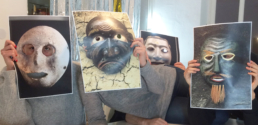
Originally, c/o now’s research followed a group of women who met in Tbilisi in 1919, as part of philosopher George Gurdjieff’s entourage. Among them was Olga Ivanovna Lazović, a Montenegrin dancer who went on to marry Frank Lloyd Wright.
After losing her daughter Svetlana in a car accident, Olga relayed of her longing for Georgia and her loss to a young Georgian woman she had met at a party in Los Angeles and who, like her daughter, was named Svetlana.
She wrote her hundreds of letters asking her to come to Taliesin – Frank Lloyd Wright’s studio residence. During a visit, Olga finally persuaded Svetlana to marry her daughter’s widower, FLW’s protege and office manager.
Svetlana only ended up staying briefly at Taliesin before fleeing. She bemoaned that Olga’s regime was worse than that of her father back home in the Soviet Union: Josef Stalin.
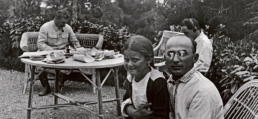
Although the story is undoubtedly captivating, the unfolding of events during COVID-19 took the project in another direction.
“We had always planned to work with film, but suddenly we found ourselves in lockdown.”
The group became inspired by a friend of theirs – Boris Kramaric – who took a several week-long walk from the East to West coast of the USA via Google Street View, and captured it with screenshots.
Integrating it into their own work, c/o now acknowledge that Street View is “a completely legitimate tool for urban research, and then, during the pandemic, the whole thing became even more relevant.”
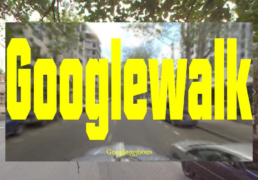
The virtual exploration resulted in a series of 59-second videos that address a range of topics from ‘Strollology’ to ‘Corporate Rococo’.
“They are perhaps even more influenced by what we think we have learned about Georgia. They are also very intuitive and less conceptual, which is probably a good thing.”
In the end, nine clips were split into groups. The first series is named ‘Sakhli Opisi’, which is the Georgian word for home office. Then there is ‘Vocab’, which centres on the idea of transferring the gibberish of architectural jargon into precise and usable terms.
Although the group describe their method as intuitive, they admit that they try to keep a degree of distance, focusing more on “systematics overlaid by specificities”.
“For this reason alone, the subject of exoticism is of great interest to us. Georgia has a long past in which it has been exoticized and mystified from the outside and also from within. The self-designation as the ‘Balcony of Europe’ alone opens a view into a highly contradictory situation. And on top of this, there are the distortions caused by post-communism, neoliberalism, nationalism and power. These issues may also appear in a specifically Georgian form, but in essence, they are universal.”
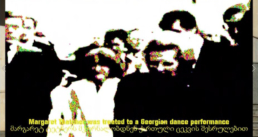
Margaret Thatcher appears twice in the series. The first reference appears in the video ‘It’s the people who get things done’, which explores the neolibral dogma of individualism, and paraphrases Thatcher’s quote that there is ‘no such thing as society’.
The group elaborate: “She can thank Boris Johnson for that one. Recovering from COVID-19, he made reference and contradicted the quote, saying that ‘There is such a thing as society.’ It was crazy to hear him wipe Thatcher’s dogma off the table for a short punch line. In the turmoil of the lockdown, some have seen this as a sign of imminent change. If Thatcher is the symbol of cruel ideology, then Johnson is the symbol of an even crueler post-ideological attitude that has its roots in that past.”
The group take a look at the Iron Lady one more time, using footage that they stumbled upon of her visiting the iconic Wedding Palace in Tbilisi during the Soviet era. They mixed the pictures with a track from their friend Matthias Lehrberger, who goes by the name ‘Auf dem Weg ins Kaufhaus erledigt ich noch einen kleinen Hauskauf’.
“Suddenly there was this vibe that reminded us a bit of the HBO series Chernobyl. A provocation, sure. But the unholy marriage of neoliberalism and post-communism in a building typology replacing religious rituals built by Soviets? All the meanings depicted in the original footage itself and their spatializations tell many crazy stories at once.”
The video titled Corporate Rococo is based on a term coined by artist Stephan Dillemuth. Paraphrasing Dillemuth, the video underlines that ‘we are facing a new form of counter-enlightenment’, in which a ‘new courtly culture is emerging’.
The piece goes on to critique ‘how ‘architects and artists take the role of cheerleaders’ while ‘allegedly socially dedicated or politically motivated artists collagulate into decorative patterns in an ornament of power’.
The statements do not refrain from posing the question of whether it is possible to operate outside of this structure. Half-mocking, the group answer: “No! Everything totalitarian, for example, justifies itself with the pure existence of the counter-protest: Look how important it is that we keep order! See how tolerant we are of disorder in the first place! It is impressive or rather frightening how quickly every disturbance is now aesthetically absorbed by the larger pattern.”
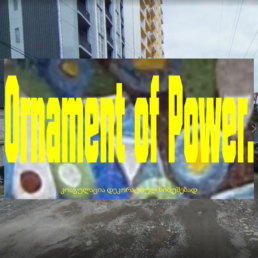
They are certain that they would like to have a role in building for communities, but for now are preoccupied enough with smaller private projects and working virtually.
Alongside their partnership with Tbilisi Architecture Biennale, the group made a spin-off of four clips for Berlin Brandenburg 2040, and another project together with TAB in collaboration with Future Architecture Platform.
“I think we, like our clients, are so far satisfied with what we do together. But of course the importance of cultural capital cannot be hushed up. Before c/o now, we already had the opportunity to collect cultural capital in Berlin. Sometimes it is already cultural capital just to be from Berlin, and cheerleading is the supreme discipline of contemporary culture.”